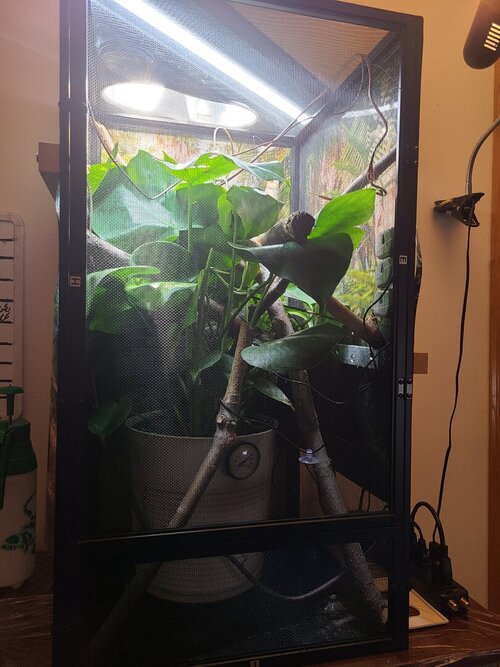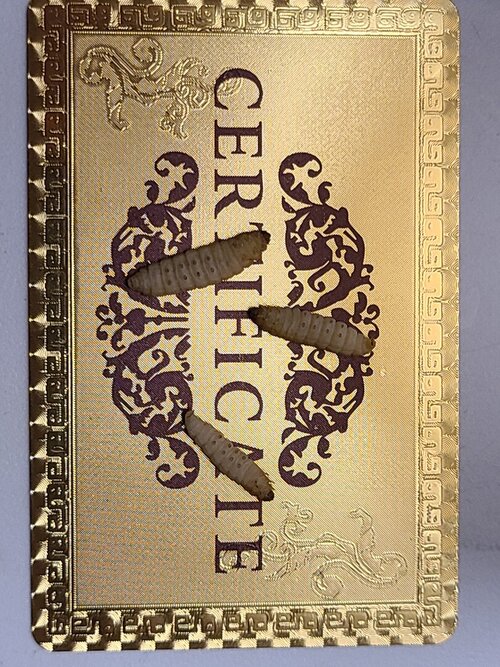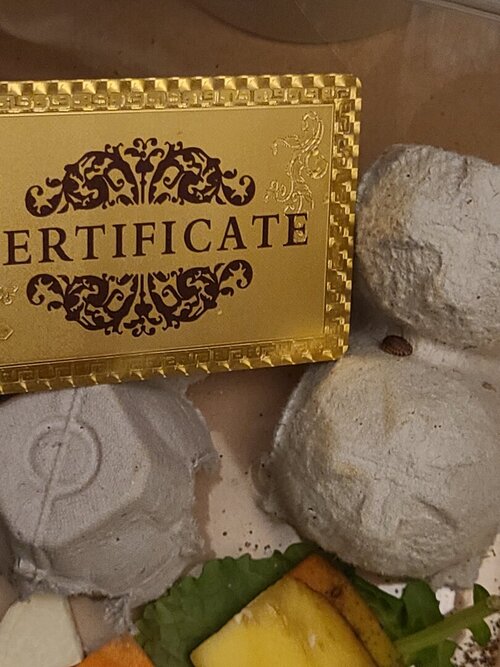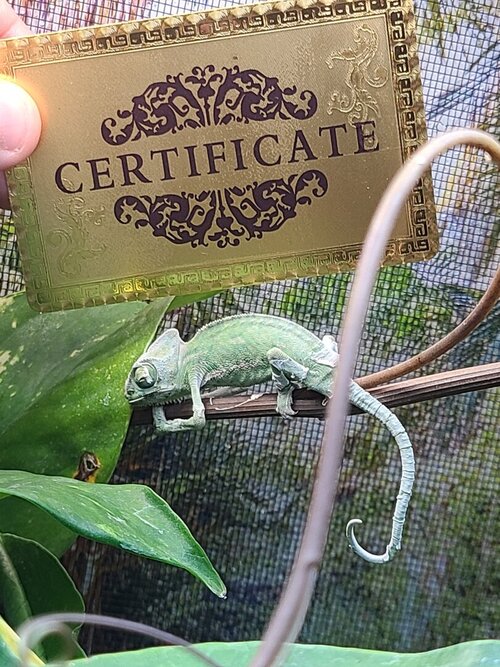lx21
Member
My veiled chameleon has only been eating once a week. I noticed today that his eyes were a little sunken, his poop was orange so I knew he was dehydrated. His cage has plenty of plants and branches for him to climb on. I mist the encloser 3x a day. He has a 75w heating lamp and a reptisun t5 ho. I decided to forcefeed him since I saw that his eyes has been kind of closed during the day. I think I stressed him out too much by forcefeeding. His color turned really light and he just gave up. He closed his eyes. I put him back but it seems like he's just given up and died. He's not moving anymore. He's not even attempting to climb the branches. Did I just kill my chameleon or will he recover if I just leave him be? I dont usually handle him. I only go into his cage to mist and put in or take out his food bowl. I know his cage is kind of small right now, but since he is still very tiny I didn't think it would matter quite yet. Right now he is in the 16x16x24. I am building a 24x24x48 for him and it's almost done, but now I am just worried that I killed him by strrssing him out with the forcefeeding.





